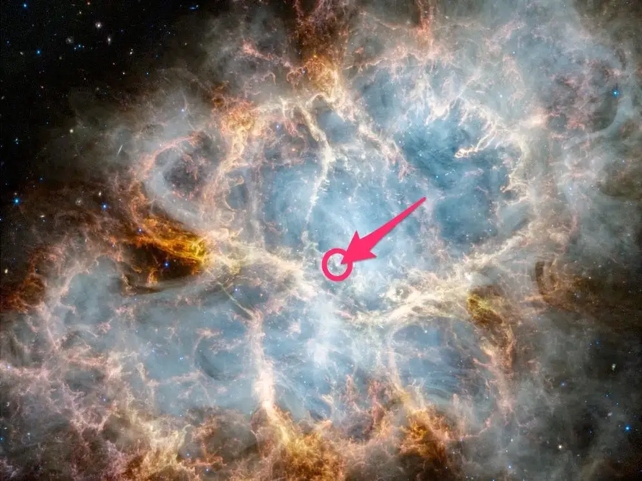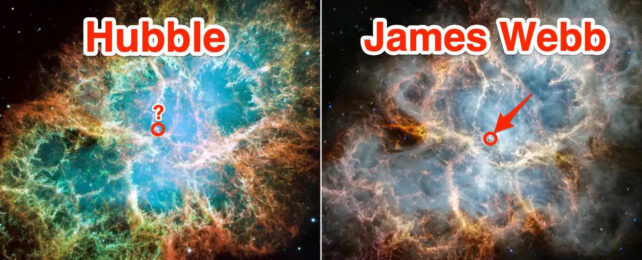NASA's James Webb Space Telescope (JWST) has captured new views of a stunning nebula, revealing never-before-seen details.
A nebula is a cloud of gas and dust often formed from the debris of dying or exploding stars. These clouds are also cradles of new stars, with the gas and dust providing the building blocks for stellar formation.

Astronomers estimate there are tens of thousands of nebulae in the Milky Way galaxy, alone, and JWST recently turned its sights to one nearby: the Crab Nebula, located about 6,500 light-years away.
Studying the Crab Nebula in incredible detail
On Monday, NASA released a new image of the Crab Nebula, clearly showing a small white dot at its center. It's the heart of the Crab Nebula, called the Crab Pulsar.
About 1,000 years ago, a supermassive star went supernova, and exploded, spewing its blazing hot guts into space. But the dense core of that star remained intact and is the Crab Pulsar that lives at the center of the nebula today.
A pulsar is a rapidly rotating object that, in the case of the Crab Nebula, supercharges the gaseous material around it that JWST has revealed in stunning detail for the first time — something the Hubble Space Telescope could not show when it turned its sights on the Crab in 2005.
JWST reveals new features in the Crab Nebula
Hubble observes space mostly in the same type of light that we see — visible light. Therefore, Hubble was not capable of capturing the hazy, ghost-like, thin white wisps of charged particles seen by JWST, which recently viewed the nebula in infrared light.
These charged particles move around strong magnetic fields produced by the Crab Pulsar. They whip about at relativistic speeds, at a fraction of the speed of light and emit a powerful light that's sometimes used in X-ray imaging and is known as synchrotron radiation.

The other, more colorful tendrils of gas and dust you see in the image are leftover bits of the dead star. For example, ionized sulfur looks reddish-orange, ionized iron appears blue, and dust appears greenish-yellow.
"Webb's sensitivity and spatial resolution allow us to accurately determine the composition of the ejected material, particularly the content of iron and nickel," Tea Temim, who led the team that used JWST's infrared instruments to image the Crab Nebula, told NASA.
For the first time in 20 years, Hubble will have a new image of the Crab Nebula ready for comparison sometime in the next year, or so, per NASA.
This article was originally published by Business Insider.
More from Business Insider: